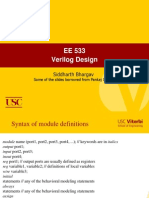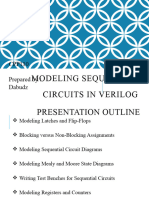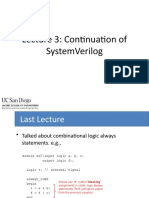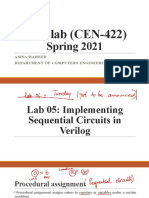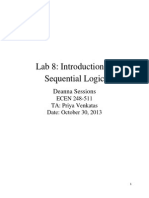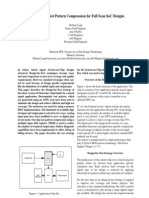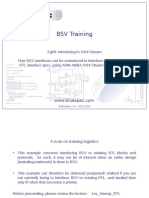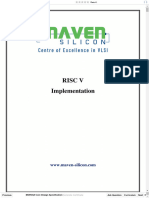0% found this document useful (0 votes)
10 views2 pagesGokul D 3rd Assignment - Tessolve-Verilog
The document outlines a Verilog assignment focused on various concepts such as parameters, arithmetic operations, inferred latches, and multiplexer design. It includes specific tasks like developing code for an ALU, understanding inferred latches, and correcting coding styles for always blocks. Additionally, it emphasizes the importance of using non-blocking assignments for sequential logic and provides links to relevant resources for further learning.
Uploaded by
gocool24072002Copyright
© © All Rights Reserved
We take content rights seriously. If you suspect this is your content, claim it here.
Available Formats
Download as DOC, PDF, TXT or read online on Scribd
0% found this document useful (0 votes)
10 views2 pagesGokul D 3rd Assignment - Tessolve-Verilog
The document outlines a Verilog assignment focused on various concepts such as parameters, arithmetic operations, inferred latches, and multiplexer design. It includes specific tasks like developing code for an ALU, understanding inferred latches, and correcting coding styles for always blocks. Additionally, it emphasizes the importance of using non-blocking assignments for sequential logic and provides links to relevant resources for further learning.
Uploaded by
gocool24072002Copyright
© © All Rights Reserved
We take content rights seriously. If you suspect this is your content, claim it here.
Available Formats
Download as DOC, PDF, TXT or read online on Scribd
/ 2

